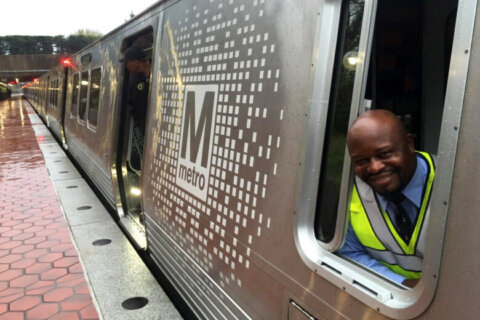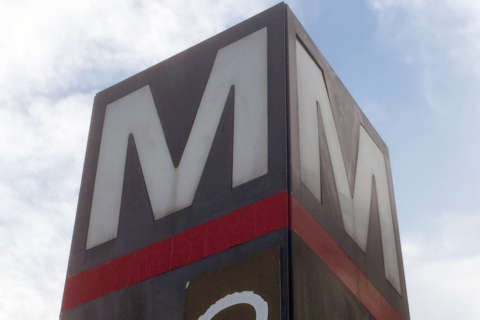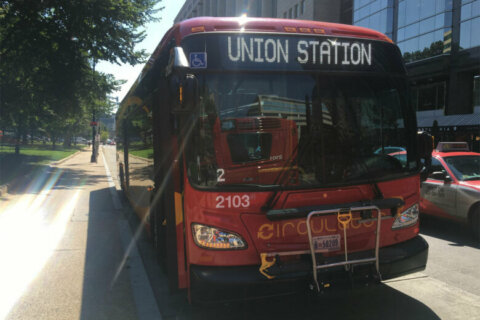WASHINGTON — Metro’s new trains pose a safety risk to visually impaired passengers that must be addressed immediately, the Federal Transit Administration has told Metro’s general manager.
The letter from the FTA to General Manager Paul Wiedefeld directs immediate action on the rubber barriers between cars, after an incident last month in which a visually impaired person fell onto the tracks while trying to get on a train.
“The FTA finds that the 7000-series [between-car barriers] do not provide adequate warning for passengers with visual impairments, and create an unsafe condition that poses a substantial risk of death or personal injury,” the FTA letter said.
On May 25, a woman using a white cane searching for the open door of a 7000 Series railcar mistook the gap between cars for an open door and stepped straight off the platform. Witnesses described her as shaken up by the incident, but with only minor physical injuries.
“This accident highlights the ineffectiveness of the rubber barriers on WMATA’ s 7000-series rail cars in mitigating safety risks for passengers with visual impairments,” the FTA letter said.
The problems had been raised before, including in a January 2016 letter from the FTA.
Metro then promised to add chains across the openings between cars that match those used on older railcars by the end of 2017. Those changes have not been implemented yet, and Metro now projects the fixes will not be made on all cars until November 2019, the FTA letter said.
The FTA is now requiring Metro to submit a plan within a week showing how Metro is explaining the risk to riders, explaining any additional safety steps Metro plans until new chain barriers are installed on all cars, demonstrating that Metro is expediting the delayed work to get all 7000 Series trains updated by the end of this year, and demonstrating that all new 7000 Series cars not yet in service will get the chains added before carrying riders.
The new trains already have those chains at every second gap between cars.
The inconsistency, and the greater distance of the rubber barriers from the platform edge, combine to create the danger, the FTA said.
“Unlike the chain barriers, the rubber barriers leave as much as a nine-inch gap at the platform level, which can be mistaken for an opening,” the letter said.
In a statement, Metro said it remains confident that the existing design is safe and accessible, and complies with applicable laws such as the Americans with Disabilities Act.
“Metro worked closely with the accessibility community and oversight personnel to ensure that safety and accessibility compliance were the highest priorities during the design and decision-making process leading to the dual between-car barrier concept,” spokesman Ron Holzer said in an email.
Metro said its testing confirmed that the current design was safe, but that it will replace the existing between car barriers on all trains that are in service.
“We are working as quickly as possible with the rail car manufacturer to install the chain-barriers on the existing 7000-series rail car fleet as well as on new rail cars from the manufacturer. In the meantime, Metro is making public address announcements in stations to remind customers with disabilities to tap the floor of the train before boarding, a standard safety procedure. We will also work with and respond to the FTA with an action plan as requested by June 29, 2018,” Holzer said.







